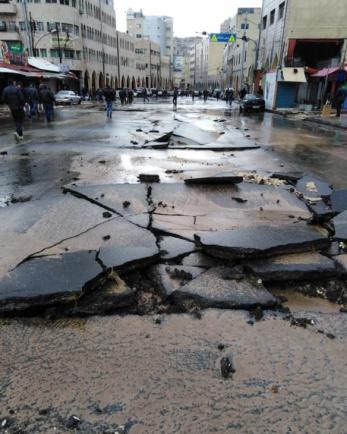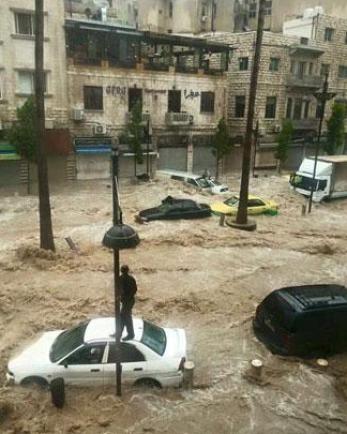How can cities build resilient communities and address urban challenges?

By Yazan Al Haddad and Shorouq Abu Razzouq
At the Innovate4Cities 2021 Conference, Mercy Corps was joined by UN-Habitat Jordan, the Greater Amman Municipality, and Civil Defense Authority to discuss how cities can build resilient communities while also addressing urbanization, especially in the context of an influx of refugees which has placed pressure on government capacity, water demand and sanitation infrastructure.
Addressing compound risks of climate change, urbanization, and social cohesion in communities
Mercy Corps has been working to promote the resilience of flood vulnerable communities in Amman and 10 other communities across Jordan, through evidence-based programming to build stronger communities. Amman in particular is vulnerable to flood risks due to a recent influx of Syrian refugees which has increased the demand for water and put additional pressure on the city’s sanitation infrastructure. With high rates of water runoff and little green space to absorb high-intensity rainfall, the city is prone to increasing rates of flash floods.

To explore these challenges, Mercy Corps convened a number of expert speakers from UN-Habitat Jordan, Greater Amman Municipality, and Civil Defense to explore the challenges posed by floods, urbanization and social tensions in Jordan and propose solutions for building resilient communities.
The discussion focused on the critical need to engage communities as the first step to building resilience to floods and other natural hazards. Examples of urban development and infrastructure solutions were also highlighted.
Adaptation planning in action
Shorouq Aburazzouq of Mercy Corps noted that a recent assessment of flood resilience capacities in Amman, Jordan revealed that there are opportunities to develop sources of community resilience by increasing participation in flood-related activities. By increasing capabilities in first aid and flood preparedness, communities will be strengthened to withstand the next flood event.

Lubna Shaheen from UN-Habitat Jordan provided a strong example of reducing urban risks and enhancing the resilience of flood vulnerable populations in Amman. By developing integrated solutions that focus on community awareness of flood risks, and managing urban planning and building standards, can enhance the ability of the government and the local community to better manage their responses to flash floods.
Nisreen Daoud from Greater Amman Municipality highlighted the work currently underway to develop strategic plans and institutional goals that reduce current and projected flood risks for local communities and refugee populations. This includes plans to transform Amman into a green city (GCAP), which will address the city’s environmental challenges and create partnerships with supporting agencies and the private sector to adapt to climate change impacts.
Talal Jarrah of the Disaster and Crisis Management Department (Civil Defence) discussed how flash floods have become an increasing threat in Jordan, with incurred economic losses estimated at $29 million over the last 30 years. The Civil Defence Department has taken all available measures to reduce the risks and impacts of flooding like monitoring weather conditions, and raising the awareness of citizens through the media but as Talal noted, these actions won’t be effective unless local community engagement is at the core of these efforts.

In conclusion- engagement with local communities matters
To build a resilient community, you need more than just physical solutions to climate risks or changing policies at the national or local level. Increasing community participation in the decision-making process will not only help mitigate the effects of climate change, but it will also create sustainable communities and safe cities in the long term.
Strengthening partnerships between local government institutions and communities, with a focus on community participation in the development and implementation of disaster risk reduction plans is crucial in building a city’s resilience.